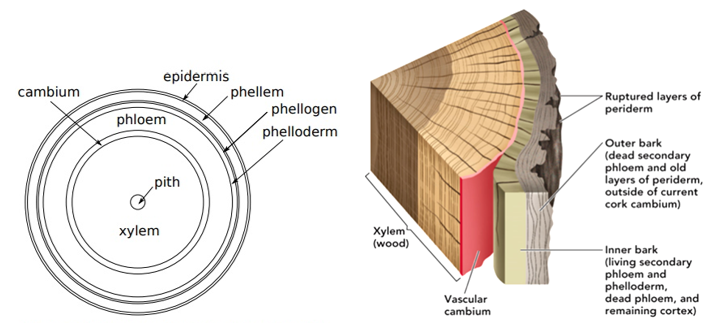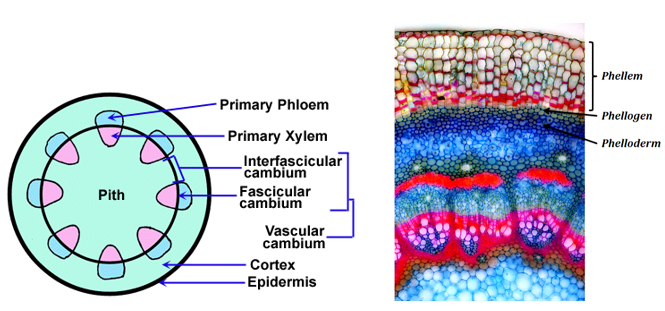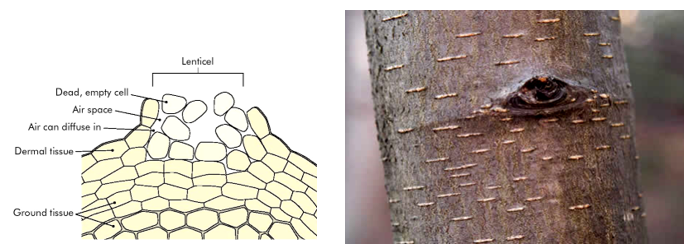Due to continuous increase in the girth of the stem due to the activity of vascular cambium, great pressure is exerted on the outer cortex and epidermis. The epidermis will eventually get ruptured and hence new protective cell layers should be formed. This new layer is formed by the activity of another meristematic tissue called phellogen or cork cambium.

Phellogen
- Phellogen is multi-layered and is composed of narrow, thin walled rectangular cells.
New tissues are produced on either side of the phellogen. - It is formed from the parenchyma cells found in the cortex region and hence is a secondary meristem.
Phellem
- More cells are formed towards the outer side, and they differentiate into cork or phellem.
- These cells are compactly arranged non-living cells.
- The walls become highly lignified due to the deposition of suberin over the cellulosoic cell wall.
- Hence, these walls are impermeable to water and gases, and thus forms a protective tissue against dessication and injuries.

Phelloderm
- The cells that cut off to the inner side differentiate into secondary cortex or phelloderm.
- It is composed of isodiametric parenchyma cells with intercellular spaces.
- They resemble the cells of the cortex.
- These cells carry out photosynthesis or act as storage areas for food.
The phellogen, phellem and phelloderm together constitute the periderm. The cells found outer to phellogen gradually slouches off due to the pressure of new tissues formed by the activity of the cork cambium.
Bark
- Sometimes, the periderm may not be able to withstand the pressure coming from the increasing secondary tissues.
- In such cases, the periderm begins to form in the deeper regions of cortex, pericycle, phloem etc.
- So the cells in these regions are cut off from food and water supplies.
- Eventually, all the cells that lie outside the vascular cambium become dead cells, and they form the bark.
- Bark formed in the early season is called early or soft bark.
- The bark formed during the end of the season is called late or hard bark.
Lenticels
- When epidermis gets gradually replaced by periderm, the exchange of water and food becomes difficult due to the suberisation of phellum.
- In such cases, certain raised pores develop on the surface of the stem for the exchange of gases. These are called lenticels.
- The lenticels are formed by the phellogen.
- Instead of cork cells, phellogen produce loose parenchyma cells towards the periphery.
- These cells eventually rupture to form the lens-shaped lenticels.
Lenticels are formed just below the stomata, and thus they help in the exchange of gases between the outer atmosphere and the internal tissue of the stem.
